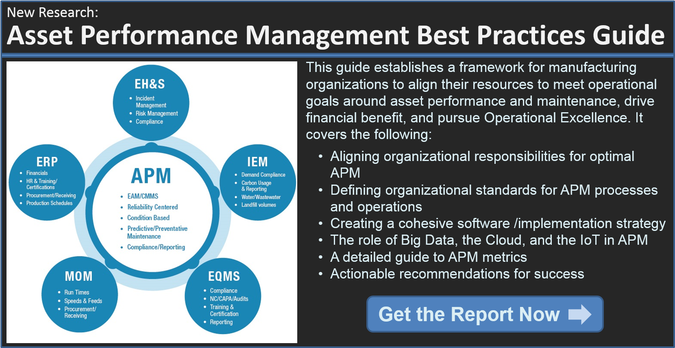This week's roundup discusses quality, maintenance, environment, health, and safety management, and big data. If you think an article should be included in the weekly roundup, email info@lnsresearch.com.
The biggest headlines in the transportation technology market today tend to be around "ridesharing" services and the future of self-driving cars, but a number of startup companies are focusing less on the particular vessels, and more on the spaces in between. Miovision Technologies and Urban Engines are leveraging Big Data technology to feed municipalities mountains of traffic data to help fight gridlock.
Miovision's technology, the Scout Video Collection Unit, collects information at busy intersections and sends the data to a cloud services where it aids municipal transportation agencies in responding to changing conditions. Currently being tested in pilot programs across the U.S. and Canada, the company's latest round of funding will accelerate this process.
According to the U.S. Department of Transportation, traffic congestion from 498 metropolitan areas results into 2.9 billion gallons of fuel per year being burned while cars, trucks, and other vehicles sit motionless bumper to bumper. CEO and co-founder of Movision Kurtis McBride estimates that optimizing the flow of all intersections would have the same impact as completely removing 5-10% of vehicles from roads. Read the full story at GreenBiz...
As EHS management initiatives become more important for company success, the case for implementing dedicated EHS management software is growing. Rachel Beavins at EtQ examines five reasons why the time is at hand to migrate from inefficient point solutions and paper systems for managing EHS. With the thousands of potential regulatory requirements in existence to keep up with, as she mentions, EHS management software can be important in making sense of the regulatory landscape to begin with, not to mention provide the automation, control, and reporting to keep you in compliance. Additionally, EHS management software makes change management a comparative breeze to paper solutions with its integration to CAPA and document control and employee training capabilities. See the full five...
Tim McMahon, founder of the Lean Journey Blog, had an interesting post about company philosophy toward quality in manufacturing, expressing in prose much of what we try to reinforce with data. As he puts it, "We cannot add (quality) at the end of the line or inspect in into the product...If we want a quality product it must be made with quality processes by quality minded people." This is a great way of turning what has often been the status quo of siloed information and departments -- with quality serving as a reactive policing function -- on its head, and a great segue into considering Closed-Loop Quality Management as the next step forward in your quality journey. Full post here...
When money is readily available, it's possible to take on a bit more risk since you can always throw dollars into resolving a crisis. But when times are tight, as they are right now in the mining industry with near-record-low commodity prices, unexpected expenses take on much higher gravity, and management avoids excess spending across the board. However, unexpected expenses are exactly what tend to occur when Asset Performance Management (APM) activities are bumped from the list of priorities for production.
In this post, Principal Analyst Dan Miklovic talks about the importance of mitigating risks in these times, and how a counter-intuitive (at least from a financial standpoint) prevention strategy, using both condition based maintenance (CBM) and reliability-centered maintenance (RCM) tools, is key to managing operational risk related to production asset performance. An ounce of prevention is worth a pound of cure, as they say. Full post...
